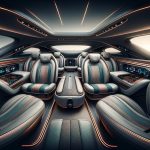Cruise, General Motors’ autonomous vehicle branch, has initiated a restart of manual driving in Phoenix, Arizona, setting the stage for a careful return to its autonomous ambitions. This development marks a strategic pivot for the company, which had to halt its operations nationwide after facing regulatory setbacks in California. In resuming manual operations, Cruise plans to collect vital road data to bolster the validation of its self-driving technology, while reestablishing the public’s trust.
In a broader context, Cruise’s journey can be traced back to its roots in San Francisco, where it aimed to conquer the complex urban environment through its driverless robotaxi services. The recent regulatory challenges, including the revocation of its permits by California authorities due to alleged non-disclosure of incident footage, underscore the hurdles faced by autonomous vehicle companies. San Francisco’s lawsuit against the CPUC further emphasizes the city’s cautious approach to the deployment of robotaxis. Amid these dynamics, Cruise’s choice of Phoenix over San Francisco for relaunching operations signals a strategic recalibration and reflects a broader pattern of autonomous vehicle testing and deployment across different regulatory landscapes.
Strategic Adjustments and Safety Commitments
In the wake of leadership changes and the quest for enhanced safety, Cruise has taken decisive steps to reconfigure its organizational structure and bolster its relationships with regulators and the communities it serves. The appointment of a chief safety officer and the formation of a specialized regulatory team are among the key initiatives undertaken to ensure a responsible advancement towards autonomous mobility. Engaging with local stakeholders, Cruise underscores its dedication to a collaborative and transparent approach, aiming to foster trust and achieve compliance with the highest safety standards for future operations.
Cruise’s preparation for a return to driverless service involves a meticulous process of data collection and system validation. The company’s manual driving operations serve as a foundation for creating detailed maps and accumulating road information, which are crucial for the sophisticated functionality of autonomous vehicles. By emphasizing the importance of accurate location data and thorough road feature identification, Cruise is laying the groundwork for vehicles that can navigate the complexities of real-world traffic.
Mapping the Future of Autonomous Driving
The road to resuming driverless activities for Cruise involves a rigorous accumulation of road data and refinement of the AV technology. Mastery of the urban landscape through detailed semantic maps and high-fidelity location data stands as a prerequisite for meeting the stringent safety and performance benchmarks set by the company. The upcoming phase of supervised autonomous driving with safety drivers at the helm will be critical for validating the complete spectrum of the AV’s capabilities before transitioning back to fully driverless operations.
Related Developments in Autonomous Vehicle Technology
In the realm of autonomous vehicle research, news outlets like The Verge and Engadget have recently covered advancements and challenges. The Verge’s article “Self-Driving Vehicles Tackle Weather Challenges” delves into how companies are developing capabilities to navigate diverse weather conditions. Engadget’s “Autonomous Tech Aims to Increase Efficiency on Roads” explores the potential for AVs to improve transportation and reduce congestion. These narratives affirm the ongoing pursuit of innovation within the industry and the significance of overcoming technical and environmental obstacles for the success of autonomous mobility.
Useful Information
- Phoenix is now the focal point for Cruise’s manual driving reboot, not its original base, San Francisco.
- The company is collecting road data to validate its autonomous systems for a potential return to driverless operations.
- Recent leadership restructuring and the appointment of a chief safety officer at Cruise aim to enhance safety measures and regulatory compliance.
Cruise’s phased approach to reintroducing its services – starting with manual driving and progressing towards supervised, and eventually, fully autonomous operations – exemplifies the cautious yet forward-looking strategies that are characteristic of the autonomous driving industry. This tactical shift, while born out of necessity due to regulatory constraints, provides an opportunity for Cruise to refine its technology, reinforce safety protocols, and rebuild public trust. For the industry and consumers alike, these developments signal the maturation of autonomous technology, as it navigates the complex interplay of innovation, regulation, and public acceptance.










